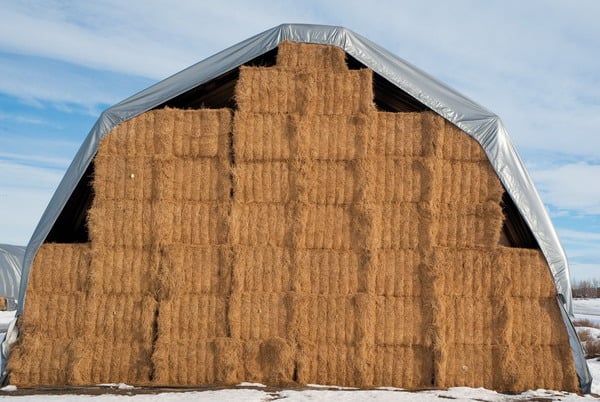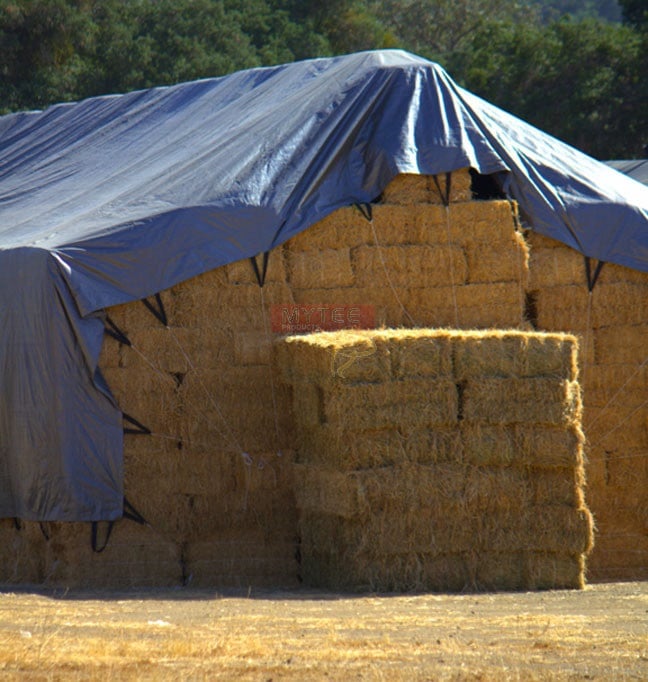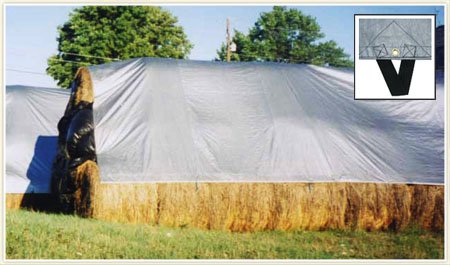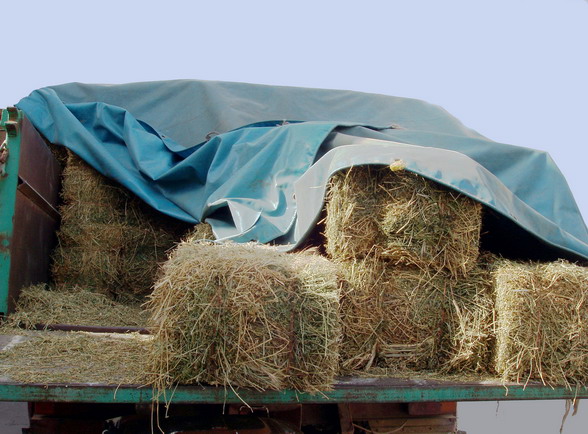We have dedicated previous blog posts to discussing the proper use of hay tarps for protecting stored hay on the farm. It turns out that many of the things farmers have to be concerned about with hay storage are actually good for another practice. Furthermore, that other practice is made better with the use of hay tarps.
What is the practice being referenced here? It is the practice of composting. Farms are great places for composting because there are so many natural materials readily available. A farm with a good composting strategy can reduce its need for chemical fertilizers while also reducing the amount of waste that goes into landfills or burn piles.

Covering Hay with Tarps
Before we discuss using hay tarps for composting, a quick refresher about covering hay is in order. Farmers who choose to use hay tarps over barns or purpose-built structures do so for a number of reasons, among them being flexibility and portability. The tarps are also used to protect bales of hay in the field until they can be collected.
As you might remember from previous posts, the key to covering hay with tarps is to avoid excessive moisture while still allowing hay bales to breathe. Bales that are wrapped too tightly in tarps are bales that cannot breathe. This can cause heat buildup that might eventually lead to spontaneous combustion.
On the other hand, covering bales too loosely can allow excess moisture to penetrate the hay. A good rainstorm is all it takes. Moisture leads to mold, mildew, and eventual losses. As you can see, there is that fine line that has to be observed when covering hay with tarps.
Cover Compost Pile with Hay Tarp
Composting is the practice of combining certain kinds of biodegradable material in a large pile and allowing it to decay over time. In reality, the soil under our feet is partly the result of thousands of years of composting. That’s another topic for another post, though. For the purposes of this post, we want to talk about composting on the farm.
A general rule of thumb for good composting is to combine natural materials by focusing on color. You want equal parts green, brown, and other colors. That means composting things such as grass clippings, hay, expired fruits and vegetables, and so on. All the material is combined in a composting bin or in a large pile well away from any structures.
Where does the hay tarp come in? Covering a compost heap with a hay tarp traps heat and moisture in the pile. This speeds up the decomposition process considerably. You can do even better by removing the tarp from time to time, turning the pile over, soaking it with water, and putting the tarp back on. Regular turning over and soaking minimizes the amount of time necessary for decomposition.
You do not have to worry about heat and moisture in a compost pile because there is no danger of spontaneous combustion. Obviously, mold and mildew are not a concern either. You can cover a compost pile with a tarp and forget about it until the next time it needs to be turned over.
Mytee Has Your Hay Tarps
In addition to our large selection of truck tarps, Mytee Products also carries hay tarps for agricultural uses. Our hay tarps are made of heavy-duty, 8-ounce polyethylene fabric that has been treated for UV resistance and waterproofing. They are tough enough to withstand the harshest conditions on your farm. When you are ready to purchase, don’t forget the 16″ spiral anchor pins.










